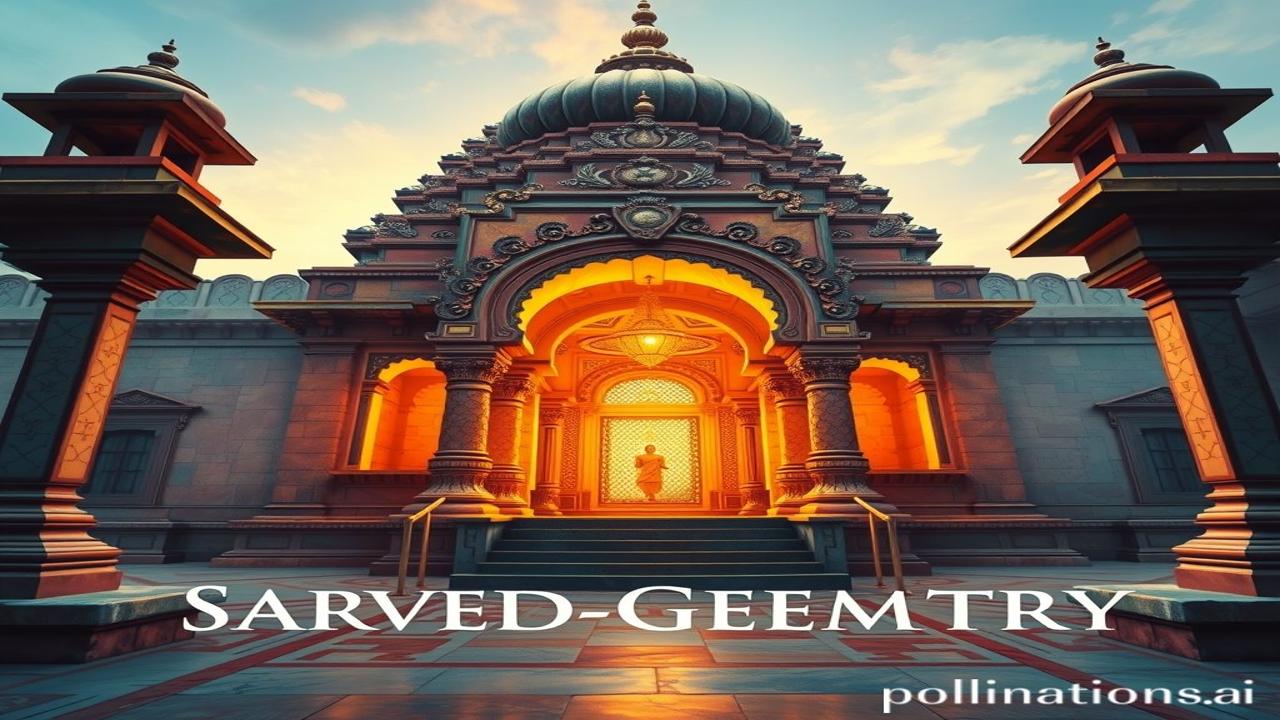Waqt Ki Dehleez Par: Sacred Geometry aur Indian Architecture Ka Raaz
Kabhi khayal aaya hai, un patthar ki deewaron mein kya kahaniyan band hain? Imagine yourself standing before the Kailasa Temple at Ellora, carved from a single rock face. Ek aisi shilp-kala, jismein na sirf mazbooti hai, balki ek gehra rahasya bhi chhupa hai – Sacred Geometry. Ye koi aam geometry nahi hai, ye toh woh bhasa hai jismein humare purvajo ne Ishwar se baat ki thi. Chaliye, waqt ki deewaron ko paar karke dekhte hain, kya likha hai hamari sanskriti ki in imaraton mein!
Sacred Geometry: Kya Hai Yeh Jadui Vigyan?
Sacred Geometry is essentially the belief that certain geometric shapes and proportions hold deep spiritual significance. It’s like a secret code that the universe speaks. In Indian architecture, this code manifests as precise ratios, symmetrical designs, and symbolic forms used in the construction of temples, palaces, and even humble homes. Sacred Geometry is not just about aesthetics; it’s about aligning with the cosmos. This concept stretches back millennia, with roots found in ancient texts like the Shulba Sutras (800-500 BCE), which detailed the geometric principles for constructing Vedic altars. In fact, even before the advent of formal religious structures, the geometry of the natural world—the spiral of a shell, the branching of a tree—inspired the artistic expression of early inhabitants of the subcontinent. This geometry provided a way to symbolize the very structure of existence, blending earthly construction with spiritual understanding.
Lesser-Known Fact: Did you know the placement of temples often corresponded with specific latitudes and longitudes believed to possess unique energies? This wasn’t random; it was carefully calculated using astronomical data and complex mathematical models.
Raajaon, Shilpkaro, aur Aatma Ka Sangam: A Deep Dive
Let’s imagine life in ancient India. Raaja apne shilpkaro se baat karte the, discussing not just design, but the spiritual resonance of each measurement. Ma Rukmini, dressed in vibrant silk, watches as artisans painstakingly carve intricate patterns into the stone, each stroke a prayer. The aroma of incense fills the air. “Hey Ramu,” the head artisan might say, “Remember, the mandala is not just a design. It’s a map of the universe. Every line, every circle, a step closer to enlightenment.”
The craftsmen, from the humblest stone-cutter to the master architect, saw themselves as conduits of divine energy. They knew that their work was not just about creating buildings; it was about creating spaces that facilitated spiritual connection. Imagine their satisfaction, their anand, when the temple finally stood complete, a testament to their devotion and skill! Farmers and warriors alike knew the temple to be the seat of power, and the geometry behind it, an unquestionable truth.
Aaj Bhi Zinda: Dharohar aur Pehchan
Even today, the echo of Sacred Geometry resonates in our lives. Look closely at the rangolis we create during Diwali, the meticulous patterns of henna adorning hands during weddings, or the floor plans of traditional homes based on Vastu Shastra. These are all reflections of the same underlying principles that guided the ancient architects. Bharatiyata is deeply rooted in our understanding of the cosmos, and Sacred Geometry is one of the most powerful expressions of that connection. It reinforces our understanding that we’re not separate from nature, but an integral part of it. The principles of Sacred Geometry are still taught in schools of architecture and urban planning to ensure continuity, that we are not just builders but creators who understand how design shapes the way we live and feel.
Kya Aap Jante Hain?: Fun Fact aur Myth-Buster
Myth: Log samajhte hain ki temples bas puja ke liye hote hain.
Asli Sach: While prayer is central, ancient temples were also designed as centers of learning, astronomy, and even medicine. The geometric principles used in their construction were intended to enhance the well-being and intellectual capacity of the community. Temples were, in essence, multi-functional powerhouses of ancient Indian society.
Aankhon Mein Tasveer, Dil Mein Ehsaas: Visual and Sensory Layer
Close your eyes. Feel the rough texture of the stone under your fingertips. Smell the incense burning in the sanctum sanctorum. Hear the chants echoing through the vast halls. The air is thick with devotion and mystery. The walls seem to whisper secrets of a bygone era. This is the essence of Indian architecture, brought to life by the magic of Sacred Geometry.
Antim Vichar: A Closing Reflection
“Yato bāhyataḥ śrīḥ, tato antah śrīr bhavec.” (Where there is outer beauty, there shall be inner beauty too.) Sacred Geometry in Indian architecture is more than just lines and angles; it’s a journey into the heart of our culture, a reminder that beauty, harmony, and spirituality are inextricably linked. Let us strive to understand and preserve this precious heritage, so that future generations can also experience the magic woven into the fabric of our ancient structures.
